Last week, our team had the opportunity to play Diablo IV extensively at BlizzCon! Neinball recently published his thoughts on the demo, and while we both generally agree on the promise that Diablo IV shows, we do disagree on which class we preferred to play in the demo. Below, you can find additional observations about the systems in the game which weren't mentioned in Neinball's write-up in addition to my thoughts on the Diablo IV demo!
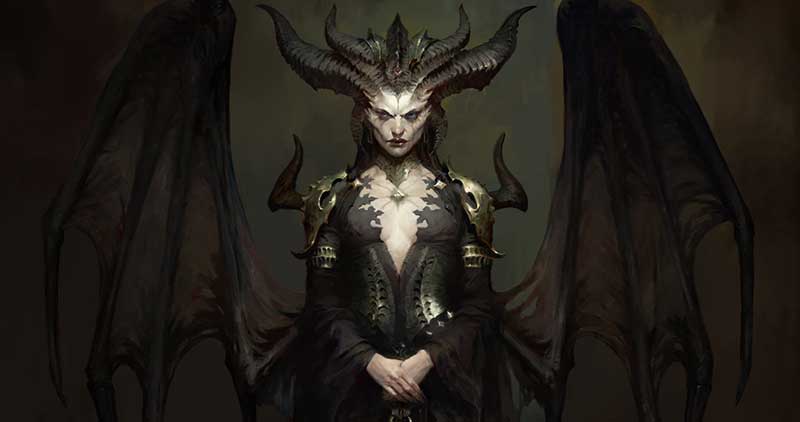
Demo Impressions
Overall, I walked away from BlizzCon with extremely positive impressions of Diablo IV. The combat felt incredibly impactful, and each of the three classes had skills which made me grin in utter delight each time I used them. The feel of combat is especially important to get right in an action RPG seeing as it's the action you're doing the most within this genre of games, and Blizzard has nailed it with Diablo IV. In many ways, the combat in Diablo IV feels like a better but slightly slower iteration of the Diablo III combat--which has always been one of the core strengths of that game. Slowing the combat down gives animators more breathing room when creating spell effects, and the result is that each skill feels like it has substantial weight and power behind it. Additionally, the gameplay felt smooth and responsive, and there was never a point in which I felt like I didn't have absolute control over my character.
Aesthetically, the game was substantially darker and more creepy than it's predecessor Diablo III, and felt more like what I would imagine Diablo and Diablo II might look like running on a modern engine. Enemies, such as the Fallen, have been re-designed to appear as frightening minions of hell rather than their more stylized counterparts in Diablo III, and entering into a dungeon gave me a sense of terror while exploring around the dark procedurally-generated tile-sets. Each room had a sense of danger, and hallways/caves felt claustrophobic in a good way. The gothic style seen in the cinematic announcement trailer translates well into the new engine which they developed for Diablo IV, and I'm particularly interested in how dark the story may get throughout the campaign. These visual and narrative changes may cause angelic characters like Imperius to seem intimidating and powerful rather than a cheesy super-hero, and enemies like Lilith may be absolutely terrifying to face when we finally meet them in game.
Diablo IV, as it existed within the BlizzCon demo, is my new favorite Diablo game from an aesthetic and game-play perspective; however, many questions still remain as to the longevity and quality of its end-game. The game is still quite early in development, and I'm very much looking forward to seeing more of what the game has to offer once the game launches sometime in the distant future.
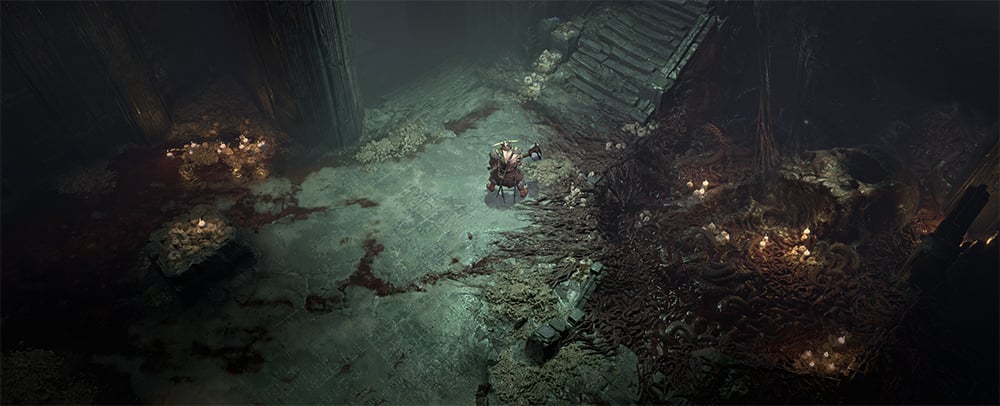
Classes
Before I begin diving into the individual classes, I want to be clear about two things. First, the power and balance of these classes from the demo is completely irrelevant. Because the game is still early in development, getting the fantasy and feel of the classes correct is a larger priority than number tuning. Second, my own thoughts on the classes come with personal biases, and I may be more inclined to like specific classes verses what our readers may enjoy. My favorite class from the entire Diablo franchise is the Assassin, and I enjoy the Monk, Crusader, and Demon Hunter equally from Diablo III. Hopefully that should give our readers a sense of what class-fantasies and gameplay styles I enjoy the most.
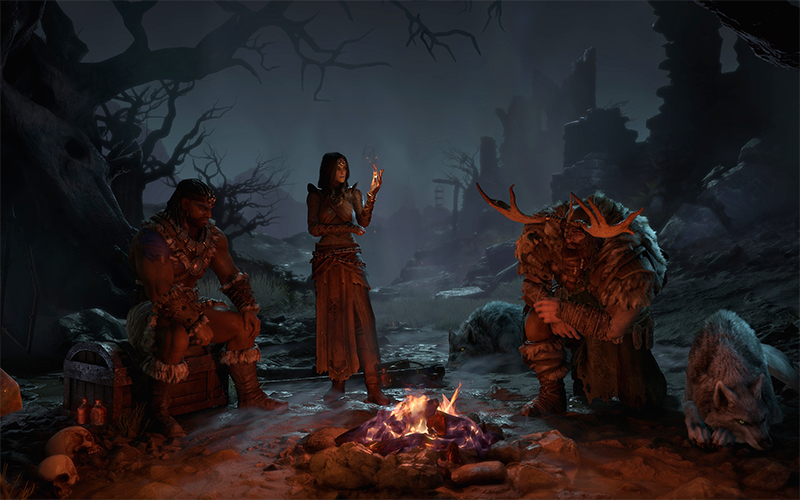
-
Sorceress
The Sorceress was my least favorite of the three available classes to play in the Diablo IV demo. While the abilities looked cool and were fun to use, I felt like I was just playing a better looking version of the Diablo III Wizard. The Sorceress was the class that felt like it had the least amount of improvement from previous games; however, if you're someone who loves the Wizard, than this may very well be the perfect class for you. The best thing I can say about the Sorceress is that each of the skills created lovely lighting effects in dark dungeons, and Lightning Spear was one of my favorite skills due to its "cool" factor. Simply put, you cast a spear of lighting that seeks out nearby enemies and destructables, zipping across the screen rapidly as it does so. I loved the feel and fantasy of that ability, and it made me feel like I was truly playing a magic-based class.
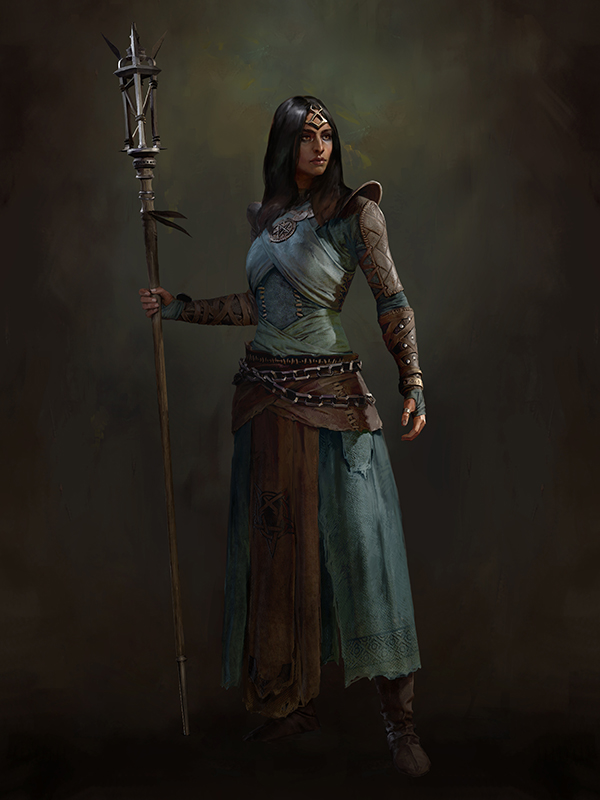
-
Druid
The Druid was the class I was most excited to jump in and play since the Druid is making its first appearance since Diablo II, and it seemed the most unique of the three. Shred and Pulverize were your two main abilities, with Shred shapeshifting you into Werewolf form whenever you would use it. Shred generated Spirit, the Druid's primary resource, and also had a high chance to hit twice. Pulverize was your primary spender, and would shapeshift you into a Werebear. Pulverize was a large AoE slam that cost spirit, so swapping between the two abilities was key to the Druid's rotation. In addition to these two abilities, the Druid could use Boulder to knock back enemies (which could even knock enemies off cliffs), Trample to charge and stun enemies, Cataclysm to create a massive storm which obliterated enemies, and Wolves which you could command to attack targets--much like Command Skeletons from the Diablo III Necromancer.
The Druid certainly plays differently than it did in Diablo II, but that's not a bad thing. Switching rapidly between Werebear, Werewolf, and your caster form felt incredibly powerful, especially when you consider that the Druid can gain passive buffs for doing so. Combat with the Druid felt very fluid, and I'm very interested in seeing the other abilities in action. Something else to consider is that the Talent Tree for the Druid contained two paths to venture down, one for spells and one for shapeshifting. While this would be quite concerning regarding end-game builds for the Druid, a conversation I had with Lead Systems Designer David Kim put those fears to rest. David Kim mentioned that an eternal version of Diablo IV currently has several horizontal paths that connect the two different Talent Tree's, allowing Druid players to swap over and create hybrid builds. Although, with the game being so early in development, it's possible we won't see that once it finally launches.
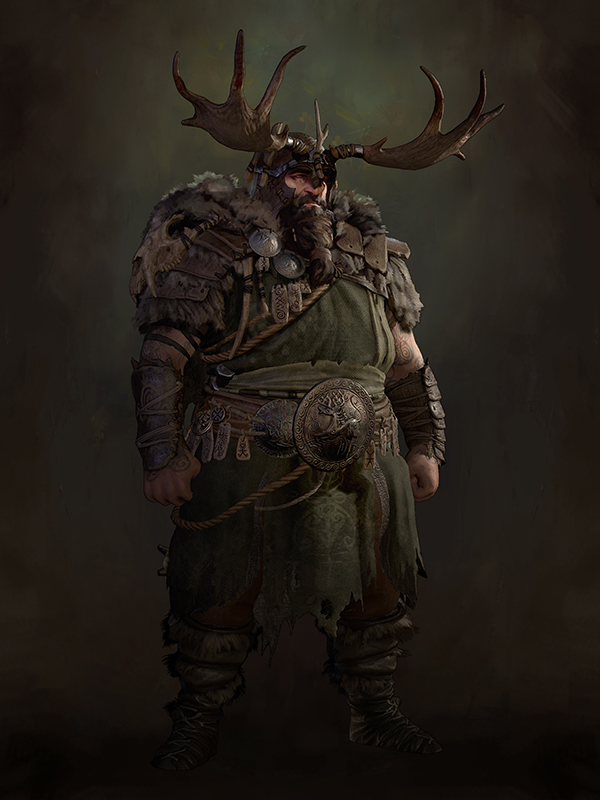
-
Barbarian
The first time I played the Diablo IV demo, I decided to try the Barbarian. My reasoning was that it had the highest potential to be the most boring and standard of the three classes, and I wanted to start with the worst of the three experiences. I'm ecstatic to report that this couldn't have been further from the truth. The Barbarian was easily my favorite of the three classes, and the one I played the most times. Every single skill felt great to use, and the synergy of the Barbarian's skills meant that when players got into a rhythm, they would absolutely devastate enemies. Losing that rhythm would cause you to feel like you were Fury-starved, and unable to use your powerful skills.
Upheaval was the Barbarian's big Fury spender, and was hands-down the most satisfying ability to use in the whole demo! After a very brief delay, the Barbarian would essentially golf-swing the ground and hurl debris at his enemies in a small cone. Upheaval is a more epic version of Seismic Slam from Diablo III, and I praised the Lead VFX Artist Daniel Briggs and his team for creating an ability which felt so good to use that I loudly and audibly chuckled with absolute glee the first time I used it.
The final thing that really sealed-the-deal with my love for the Barbarian is the class-specific ability which allows the Barbarian to equip two 1-handed and two 2-handed weapons at the same time. By doing so, the Barbarian is able to assign a skill to one of their equipped weapons, allowing the Barbarian to min-max which Skill is utilizing each of their weapons. It's not just a visual effect, but there are also gameplay implications since certain abilities require you to have specific types of weapons to be equipped. I'll be keeping a close eye on this specific system all throughout development, and I could foresee myself primarily playing a Barbarian once the game launches.
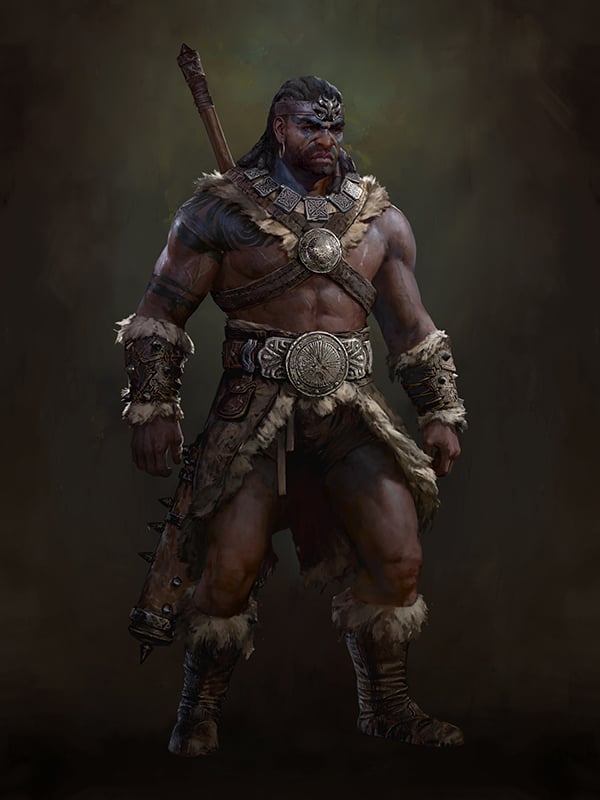
Systems
There are several gameplay systems which are key to Diablo IV that I want to also discuss. The first is the Rune and Runeword system, which is a returning system from Diablo II, but with very different design. As you play the game, you will collect Runes which can be placed into gear which have sockets. Runes come in two different varieties, a condition Rune and an effect Rune. Condition Runes might be something along the lines of "Whenever you freeze an enemy..." or "Whenever you use a healing potion..." followed by "activate the next socketed rune." Effect Runes often give very powerful buffs for a short duration, and should be paired with condition Runes that are easy to meet the condition on. An example of this system might be that you socket a condition Rune and an effect Rune into a piece of gear with two sockets, granting you the ability to reduce a cooldown on a random ability by 15% whenever you use a healing potion. Personally, I really enjoy the flexibility of this system, but I fear how easy it could be to min-max the best combination of Runes without providing any actual choice on the player's part. This could be fixed by the countless tuning nobs the developers have available to them, and there is a potential for some amazing character customization through this system.
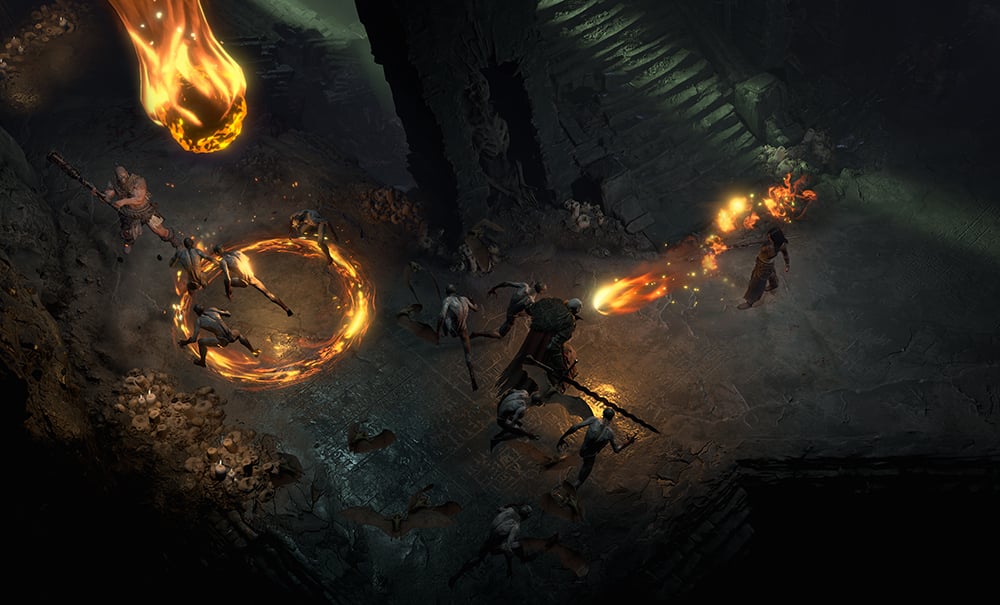
One of the more concerning aspects of Diablo IV to me is the flavor of multiplayer they have decided to use. While running around the open world, you will come across other random players. Certain regions will have restrictions on how many players you might see, and this changes dynamically depending on where you are. Campaign specific areas in the open world will be locked to you and your party until you finish that objective, but you will be able to see public players in those areas once you are done. My primary concern is with how one might perceive other random players they come across. For example, when doing World Quests in the retail version of World of Warcraft, players rarely ever interact with each other. Often times, they join a group to get a quest or world boss done, then immediately leave once their objective is complete without any form of communication or coordination. In an ideal system, the multiplayer in Diablo IV would create meaningful interactions with other players which would encourage players to communicate and coordinate to complete common goals, and in rare cases would lead to friendships. A game that discouraged these interactions through easy objectives and gameplay could very easily fracture a community before it ever had a chance to develop. Blizzard might take look at World of Warcraft: Classic as a source of inspiration for how to create meaningful multiplayer interactions in an open world to create a sense of community and cooperation between players.

The final thing I wanted to discuss in regards to Diablo IV is how it shares some interesting design philosophies with Diablo: Immortal. Now that Diablo IV has finally been announced, we've observed that people are opening up to the idea of Immortal having its place within the Diablo franchise, and our opinions on Immortal haven't changed since we got our hands on it last year: It's a cool mobile game that has a lot of potential to bring countless new players to the Diablo series. Both Diablo IV and Immortal have persistent multiplayer experiences where it's possible to find random players exploring the world alongside you. Unlike my concerns for the multiplayer in Diablo IV that I mentioned above, I'm far less concerned about having meaningful interactions with players in Immortal where it's already difficult to communicate with others. In addition to similar multiplayer design, Immortal and Diablo IV also share the idea of a large world to explore; however, Immortal differs in the sense that there isn't one massive seamless world to explore like there is in Diablo IV. Either way, it's worth considering that these two games have similar approaches to world and multiplayer design, and the idea of that excites me.
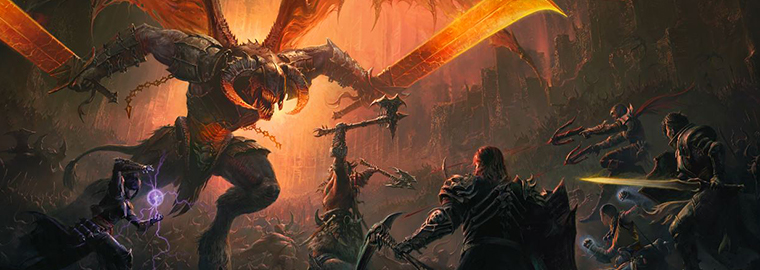
As I mentioned before, Diablo IV is already my favorite Diablo game. If they manage to tune the end-game in a compelling way, then there is no doubt in my mind that Diablo IV would also be a favorite among most other players as well. If your interested in my additional thoughts on Diablo IV, then you can check out my Deep Dive video which I've linked below. With that said, I'm anxious to hear your thoughts, and if you have any Diablo IV questions, be sure to ask them in our comments!
-
View User Profile
-
Send Message
Posted Nov 9, 2019Acording to reliable source in Blizzard and his post on reddit, two unannounced classes will be Paladin and Amazon.
-
View User Profile
-
Send Message
Posted Nov 9, 2019The itemization killed my interest. Attack and Defense? Who thought that was a good idea, it's worse than D3.
-
View User Profile
-
Send Message
Posted Nov 9, 2019This seems like a very uninformed response. Items have a myriad of additional stats on them, such as +critical hit chance and +attack speed. This is also in addition to the +skill/talent ranks that can appear on items. If anything, itemization has a lot more variety in D4.
-
View User Profile
-
Send Message
Posted Nov 9, 2019I didn’t like this defense and offense system too, they shouldn’t turn the game the too casual like wow retail for example, the classic wow experience is more envolving exactly because it’s more deph in his RPGs systems.
the rune systems I understanded they plan on keeping just 2 slots but this would be too shallow too, make it similar to POE skill system but substitute the skills for the runes, it would be very D2 like but with the links system, making 4,5 and 6 slots for runes be very very rare, and changing the possibility for one condition rune trigger 2 or even the other 5 effect runes, or making 2 slots for condition runes and 4 for effect ones, the possibility could be enormous and making runeworda possible too this way.
the tone of the gameplay I thought they where great, very diablo like and really hope for paladin and amazon classes.
They said too in the Q&A panel that they want something to make the player go back to town sometimes, the inventory systems for d2 was great in my opinion, made you really think witch items I should bring or not depending on the number of slots it occupied, the d3 system was just stupid you go there in the dungeons fill you inventory and then come back just to sell, there is no management. Could have a bag system to increase your inventory like wow classic where your bags really matter (at least in the beginning) making you craft them or whatever
the only thing that concerns me is the simplification of a few systems, the game in general looks awesome but they still didn’t get that d2 and 1 where cool exactly because of they complexity and that’s what d3 lacks in my opinion, but let’s see what they will give us in the future!
-
View User Profile
-
Send Message
Posted Nov 9, 2019It is too early to tell how well done itemization will be. Honestly, even once you have created all of the items in the game, you would need to extensively test from beginning to deep within endgame to know how well everything meshes together. It seems like a very difficult task for the developers, and they need to take the time to think every detail through, thoroughly, and put the entire game through many iterations of testing, including hopefully alphas and betas far in advance of release to continue to gather up feedback and see how everything meshes. If the itemization is like D3, where as you get into harder content, you simply replace every single item with new gear, that is a very boring system that becomes stale too quickly. Do not have all items become obselete as you progress further into difficult content, or it will create the hamster wheel affect like D3. There should be items that have their niche from as early as like level 15-20, that can be viable at end game for different builds, play styles or end game objectives and goals. Ancient versions of legendaries like in D3 is a bad idea. Most importantly, there needs to be items, and rolls of items, that are very rare to find. I want the loot chase to last a long time. Don't make it like D3 where you find all of the same exact items hundreds of times, and only keep the ones that are ancient/primal. It should be like D2 where someday you will find a new and truly unique item like a new high rune or tyrael's might or something of that nature.
-
View User Profile
-
Send Message
Posted Nov 9, 2019It depends on how much weight the attack/defense carry. If those stats are on the items to make them more powerful than lower level items, regardless of the prefixes and affixes, then they exist to make sure that as you progress into higher difficulty levels, all previous gear becomes obsolete. This is a bad system. This is the D3 system.
-
View User Profile
-
Send Message
Posted Nov 9, 2019I do not want my base item abilities being tied to "Attack and Defense". It will be what the majority of items rely on, I am not uniformed. Those bonuses are besides the point of making gear far to reliant on the two stats, the rest of them are bonuses. Go back to D2 style. This is just an even worse D3.
There is no contest when weighing an item with higher attack and defense. There is no flexibility of choice is a two main stat system like that. I'd much rather they didn't exist at all and we went with a D2 style system that encouraged thought on gear, not a big number that just makes you put it on instantly.
-
View User Profile
-
Send Message
Posted Nov 11, 2019Thanks for this article / post. Didn't know you made videos, I will check it out during my travels home from work (which is like an hour + change)
I think Blizz wanted to share this game at a later date. I get a sense it got rushed, and even though they have lots of things they aren't sure of yet, or know how to do yet, they had a bunch of information to share and visions.
Very happy to hear they are open to feedback this time and really hope they take things into account like skills, traits, runes, charms (yes), end game, loot, pvp and staying classy with the solo players out there, along with giving everyone same treatment ingame in terms of rewards.
I got burned before with Diablo III. Many of my ideas did end up in the game, but way too late in my opinion, but I am happy to see some of it making Diablo III better. When it comes to Diablo IV it seems they might need feedback on things I really can't help with, like math. Numbers how to make skills and traits better, and itemizations. I hope veteran players, who know better than I, what we need to see in Diablo IV.
Not a fan of MMO aspects in any game. I hope I can shut it off when it arrives, and have invite only from friends.
-
View User Profile
-
Send Message
Posted Nov 11, 2019Amazon have code-name "Hunter" though. Let the speculations begin.
-
View User Profile
-
Send Message
Posted Oct 6, 2021I like barbarian class in diablo. not a fan of sorcerers. Close combats are funnnn and diablo is great for that.
Kinemaster MOD APK
-
View User Profile
-
Send Message
Posted Jul 31, 2023it would be very D2 like but with the links system, making 4,5 and 6 slots for runes be very very rare, and changing the possibility for one condition rune trigger 2 or even the other 5 effect runes, or making 2 slots for condition runes and 4 for effect ones, the possibility could be enormous and making runeworda possible too this way.
-
View User Profile
-
Send Message
Posted Oct 21, 2023yeah you are right, and unfortunately there is no new update from Diablo 3.